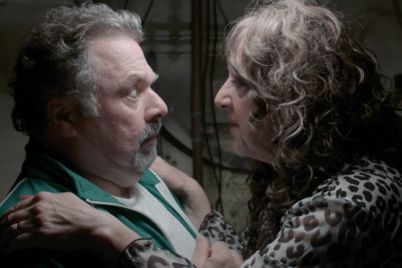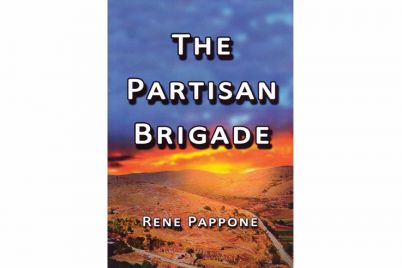Arianna Dagnino was born in Genova, Italy. After Moscow, London, and Boston, she worked in South Africa as a foreign correspondent. In Australia, she earned a PhD in sociology and comparative literature. She currently teaches at the University of British Columbia. Like many of her characters, she shares the nomadic experience.
The Afrikaner (Guernica Editions, 2019) is a powerful novel set in extraordinary locations in Africa, where we encounter some mysterious people. Zoe du Plessis and her Italian colleague, Dario Oldani, are palaeontologists searching for the remains of the earliest humans in Africa. When Dario is suddenly killed in Johannesburg, Zoe must carry on their dig in the middle of the hostile Kalahari Desert. The sensual and rich descriptions of the desert landscape take us there on every page. “The territory has spectacular red sand dunes, with solitary black-maned lions roaming the open pans. Occasionally, mighty baobabs rise amid the arid plains. Some of those giants are more than a thousand years old.” This is a visual work with cinematic qualities in many scenes.
To the eye of a white European, the barren desert may look like waste and nothingness; but to the Bushmen who have lived here for thousands of years it is full of life, possibilities, and many hidden secrets. With the aid of her Bushman friend, Koma, Zoe learns to look at the desert with different eyes – eyes which can help her become a better researcher. After the death of Dario, the heart-broken Zoe turns to the big sky of the Kalahari to escape the segregation and violence of Johannesburg.
Going into the desert evokes ancient biblical and literary traditions: the Israelites wander in the wilderness for forty years, Elijah flees into the desert, and John the Baptist emerges from the desert. Like these examples, the desert experience is depicted as a test for Zoe, both a personal trial and a professional one. The central chapters of the narrative deal with Zoe’s arduous drive across the Kalahari to reach the work camp and the dig. Will she be able to manage a camp of male workers after Dario’s death? Many of her research colleagues expect her to fail.
Her brother Andre runs the old family winery near Cape Town. Here she learns about her own Afrikaans family history and its secrets. This is South Africa just after Apartheid, but still suffering from the after-affects. The realistic discussions about the social and political divisions in South Africa among the White, the Coloured and the Black communities have many parallels with the social conflicts in North America. What does multiculturalism mean in these different multiethnic countries?
At a party Zoe meets Kurt Van der Merwe, a celebrated South African writer who intrigues her. They gradually form a relationship. Will Kurt be the man in Zoe’s life who will fill the void left by the death of Dario? “We won’t know Africa until we get to fear it. In Pain and Terror.” Will Zoe locate evidence of early human ancestors in the desert cave? Will she find answers to her own troubled life?
Arianna Dagnino has written an engaging story about one woman’s search for personal and professional direction. The author uses a realistic and plain style, creating very believable characters whom we enjoy meeting. She finds poetry in the arid beauty of the Kalahari Desert and, in the process, helps us to appreciate remote landscapes.
The Afrikaner is a work of self-translation from the Italian version titled Fossili (1996). Dagnino explains that she had to substantially rewrite much of the novel while converting it into English. As an author who used self-translation as part of the creative process, she joins a group of international writers who move between languages. These include Samuel Beckett, Vladimir Nabokov, Italo Calvino, Jorge Luis Borges, Canadian Nancy Huston, as well as African writers Ngugi Wa Thiong’o, André Brink and Karen Blixen (aka Isak Dinesen).
The English version of The Afrikaner begins with a glossary of the one hundred Afrikaans words used in the novel. In the text, these terms are often in italics. Nevertheless, they seem to fit easily into the flow of the English, possibly because of the common Germanic roots of many words.
I wonder how well Afrikaans words fit into the flow of written Italian, a language not known for its plain style! Perhaps, because of the African topics and the hybrid quality of English, this novel may well be a better work in English. The success of this work is evident in the feeling that it could not exist in any other language.
Joseph Pivato is Professor Emeritus of Literary Studies at Athabasca University, promotes Italian-Canadian authors with his books Contrasts: Comparative Essays on Italian-Canadian Writing (1985), Echo: Essays on Other Literatures (1994), books on F.G. Paci, Mary di Michele, Caterina Edwards and Comparative Literature for the New Century (2018), co-edited with Giulia De Gasperi.




